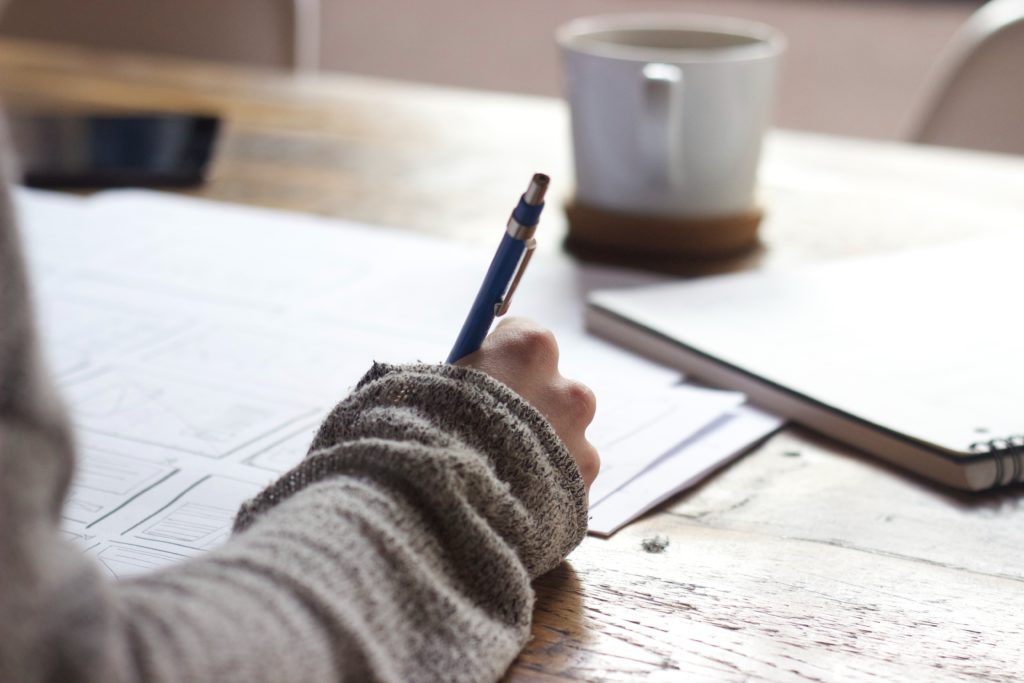Hi everyone!
Can you believe July is halfway over, where has this summer gone? This week we’re continuing with our Director of the Toledo Market, Suzanne Brockway, as she shares her thoughts on Twyla Tharp and Mark Reiter’s book The Creative Habit: Learn it and Use it for Life. Make sure to order your copy or place a hold at your local library!
Introduction
Twyla Tharp is one of the world’s most renowned dancers and dance choreographers. Not only has she choreographed and produced many plays and performances – for over 50 years she’s run her own business. The Creative Habit is Twyla’s self-help book for the creatively challenged. Her general philosophy is that creativity is a habit, a product of preparation and effort, and not necessarily just a God-given gift that only some people have. Creativity is not just for artists, it’s for business people looking for a new way to close a sale, it’s for engineers trying to solve a problem, it’s for parents who want their children to see the world in more than one way.
Chapter 7 – Accidents will Happen
Twyla tells us that luck is a skill and that if you prepare for it, it will come. To embrace luck, you have to enhance your tolerance for ambiguity and learn how to plan only to a point. By this, she means that you must plan to be creative but don’t let the planning inhibit the natural evolution of your work. The more you are in the room, working, experimenting, banging away at your objective, the more luck has a chance of biting you on the nose. The ticking clock is our friend if it gets us moving with urgency and passion.
One of the biggest traps we can fall into is the belief that everything has to be perfect before we can take another step. Limits can be a secret blessing and bounty can be a curse, don’t wait for your own studio or private office, enough money to hire the best collaborators, paints, camera, etc. to start your project. If you fall into this way of thinking, you’ll never start anything. It’s better to start than to wait until you are perfectly ready since time is our most limited resource.
If you feel like you’re struggling with a project, ask yourself the following questions:
- Am I relying too much on others?
- Am I waiting for the perfect setup?
- Am I overthinking the structure?
- Am I feeling obligated to finish what I started/is this worth finishing?
- Am I working with the wrong materials?
I found these questions helpful to reframe my thoughts and they helped me evaluate where/why I was stuck!
The following quote really resonated with me,“You only need one good reason to commit to an idea, not four hundred. But if you have four hundred reasons to say yes and one reason to say no the answer is probably no.” it was an excellent reminder for me to not overthink my concepts and simply plunge in. Even if my plan fails or my work needs revision, at least I will have started and can try again. Oftentimes we do our best work after our biggest disasters. What do you think?
Chapter 8 – Spine
In the same way that your spine supports your body, the creative spine is the foundation of your work. The spine is a guide to stay on message and is something you can return to over and over when you’re feeling lost. You can define the spine of your work easily with the following question: In two sentences, describe what is it that you are trying to say or do? Once you accept the power of the spine in the creative act, you will become much more efficient in your creativity. The process of creating can be thrilling and exciting but will work better if you can get to the good parts as quickly as possible. If you’re struggling through a project, rediscover the spine by recalling your original intentions and clarifying your goals. What was the first thing you dropped into your box for the project? Go back to it and remember how you started.
Chapter 9 – Skill
Combining passion and skill is the essence of creative life. It’s all about hard work; stop telling yourself you aren’t talented and start practicing the skills you want to develop. Building creativity on a solid foundation of skill gives us the wherewithal to execute whatever occurs to us. The great composers are usually dazzling musicians, a great chef can chop and dice better than anyone in her kitchen, and great athletes continue to practice the fundamentals of their sport. It’s important to practice with a purpose, too many of us practice what we are already good at and neglect the skills that need more work. Personally, I need to stop painting flowers and instead get outside and try urban sketching. By stepping outside of your comfort zone, you just might discover something new about the world you live in.
Making art is a habit, what’s stopping you from honing those skills? My personal fault lies in budgeting my time, I’m planning on trying the “Distraction Diet” that Twyla mentions. She says “People go on diets all the time…If they don’t like their weight, they stop eating certain foods. If their spending is out of control, they lock away their credit cards. If they need quiet time at home, they turn off the cell phone and TV.” Before I start, I’m trying to find out what’s filling up my free time in unsatisfying ways. How about you, what could you afford to trim from your life for a while? Remember, you don’t have to give it up forever, start with a week and see what you get accomplished!
Another way to acquire the skills you want is to use the examples of the greats for inspiration. “If there is a lesson here, Twyla writes, “it’s: Get busy copying”. Copying is not a popular notion today, she notes – “not when we are all instructed to find our own way, admonished to be original and find our own voice at all costs! Traveling the paths of greatness, even in someone else’s footprints, is a vital means of acquiring a skill. This just might help jump-start, develop and deepen your own work. If you’re looking for inspiration I highly suggest visiting the Mazza Museum in Findlay, Ohio. The Mazza Museum is one of my favorite inspiration spots and it houses the world’s most diverse collection of original art from children’s picture books.





